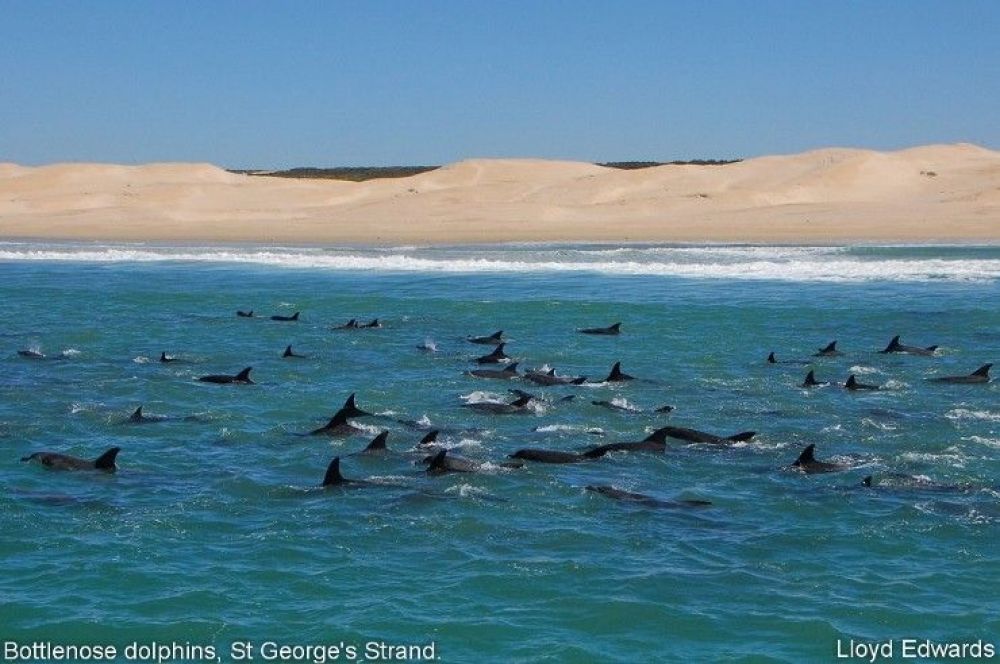Bottlenose Dolphin (Tursiops aduncus)
Enquire / BookBottlenose dolphins got their name from having distinctly bottle-shaped beaks. Scientists have recently discovered that this genus has three different species: the common bottlenose dolphin (Tursiops truncatus), the Indo-Pacific bottlenose dolphin (Tursiops aduncus), and the Burrunan dolphin (Tursiops australis), the latter only being found around Australia. The most commonly found bottlenose dolphin in Algoa Bay is the Indo-Pacific species, which will be the focus on this page.
Bottlenose Dolphins at St Croix
Indo-Pacific bottlenose dolphins reach a maximum of 2.6m and 230kg, much smaller than the common bottlenose which can reach 4 metres in length. Indo-Pacific bottlenoses are dark grey above and almost white on their belly which is often spotted as they get older. The common bottlenose is a lot darker on top and has a stubby rostrum which is separated from its large round head by a discernible crease. All bottlenose dolphins are known for being very inquisitive of humans, often coming close to boats and bow-riding the waves created. They are often seen breaching and leaping out of the water, in what appears to be joy. Bottlenose dolphins can dive up to 300 metres and hold their breath for up to 20 minutes. However, they are often found in shallow waters, no more than 30 metres deep and dive for 3-4 minutes. They are generally found in groups from 1-600, though have been known to join other schools, forming groups of up to 1,500.
Bottlenose Dolphins Under Water
Bottlenose dolphins are both cooperative and opportunistic feeders, eating fish, cephalopods, krill and other crustaceans. They can reach speeds of up to 30km/h when chasing shoals of fish, however usually cruise along between 5 and 11km/h. Pods will work together to find and herd fish by emitting high frequency sound beams which bounce off prey and are picked up and analysed via an opening in a bone in the lower jaw. Fish will often be trapped against the shore, allowing dolphins to grab the prey with their teeth. They also produce a low-frequency, high energy beam which stuns fish allowing them to catch their dinner more easily. This method of producing sounds in order to establish where/what things are is called echolocation.
Bottlenose Dolphin Breaching
Female bottlenose dolphins reach sexual maturity at 5 years of age, and give birth every 2-6 years. Their gestation period is slightly longer than 12 months and calves are then suckled for up to four years. At birth calves can reach lengths of up to a metre and about 20kg. Bottlenose calves are regularly observed in the bay throughout the year. The adults are often seen mating, with the males leaping out of the water several times, shortly afterwards.




















